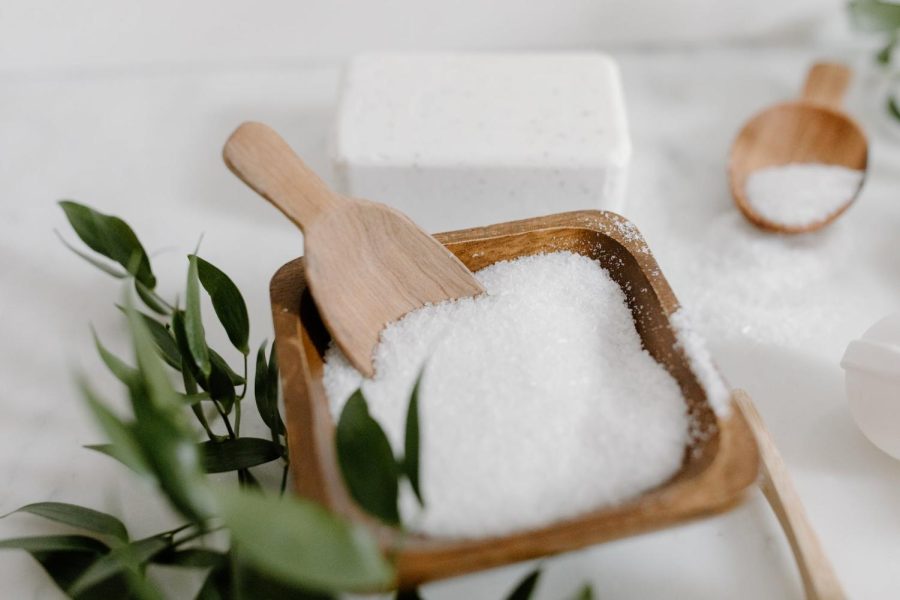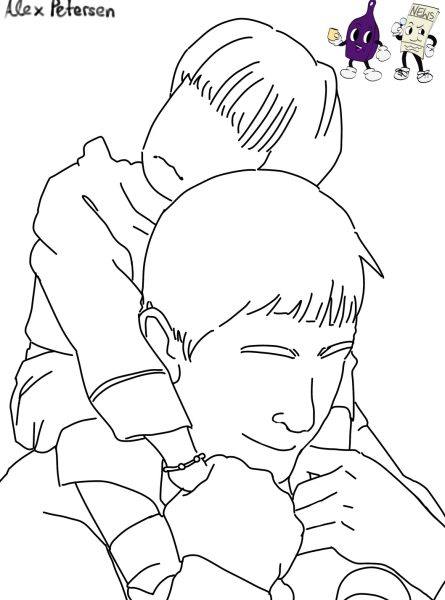THE EFFECT OF ICE MELT
Is ice melt really as beneficial as it seems?
A bowl of rock salt on top of a white table.
Ice melt and rock salt have been used since 1938 on sidewalks, streets, and any given slippery surface, to help increase traction and make walking and driving less hazardous. Over the years, accidents from falls or car wrecks because of ice continuously happen. And with a good amount of people driving two-wheel drive vehicles, or otherwise vehicles that aren’t equipped properly for the winter, there becomes an ever-important need to find a way to get rid of ice and snow on the ground.
Ice melt and rock salt are two different forms of getting rid of ice that are made up of components that act in similar ways. Rock salt typically works slower than ice melt. Known otherwise as sodium chloride, it is the same as table salt, however it hasn’t been purified to be safe for human consumption like table salt has. It’s better than most ice melts in that it provides traction on sidewalks, however it doesn’t react as fast to the ice beneath it. Ice melt, which is more refined to use on ice than rock salt, can come in two forms: solid pebbles and liquid. It is a blend of sodium chloride, magnesium chloride, and calcium chloride. Unlike rock salt, it does not provide adequate traction for people driving or walking, however it acts a lot quicker in melting or dissolving the ice.
Over the years, accidents from falls or car wrecks because of ice continuously happen.
Ice melt is used frequently to aid in removing ice off of the ground. Some cities use dirt and small rocks in its place, to keep from getting the effects of the melt. The main components in ice melt and rock salt are chlorides, which are known to be acidic. Rock salt, when combined with water, can rust exposed metal. This happens majority on cars, which often have some metal exposed underneath the paint. Rock salt gets mixed with water melted from ice and snow, and in doing so gets splashed around by cars, which makes it a great source of premature rusting. Despite this, chloride does not react negatively with car paint. Rock salt also has been known to affect sidewalks and asphalt. It can accelerate the deterioration of both, shortening their lifespans and being able to cost a lot of money in severe cases. Ice melt only affects sidewalks, and does so a lot less than rock salt. Ice melt and rock salt are also dangerous to bare skin. Many people walk out in winter, and some walk with their pets. The paw pads of any animal can be irritated or burned by rock salt and ice melt. It can be an irritant to eyes, airways, and open wounds as well.
Many people have moved from using rock salt and ice melt to using small rocks and dirt to increase traction. Unfortunately, some people also don’t realize the effects they both have on the land, animals, and vehicles around it. The consequences of using one or the other may never be fully felt by everyone. They can be beneficial in making walkways and driving safer, however the risks are also well known and must not be ignored. Money can be lost on making repairs to things that could’ve been prevented.









